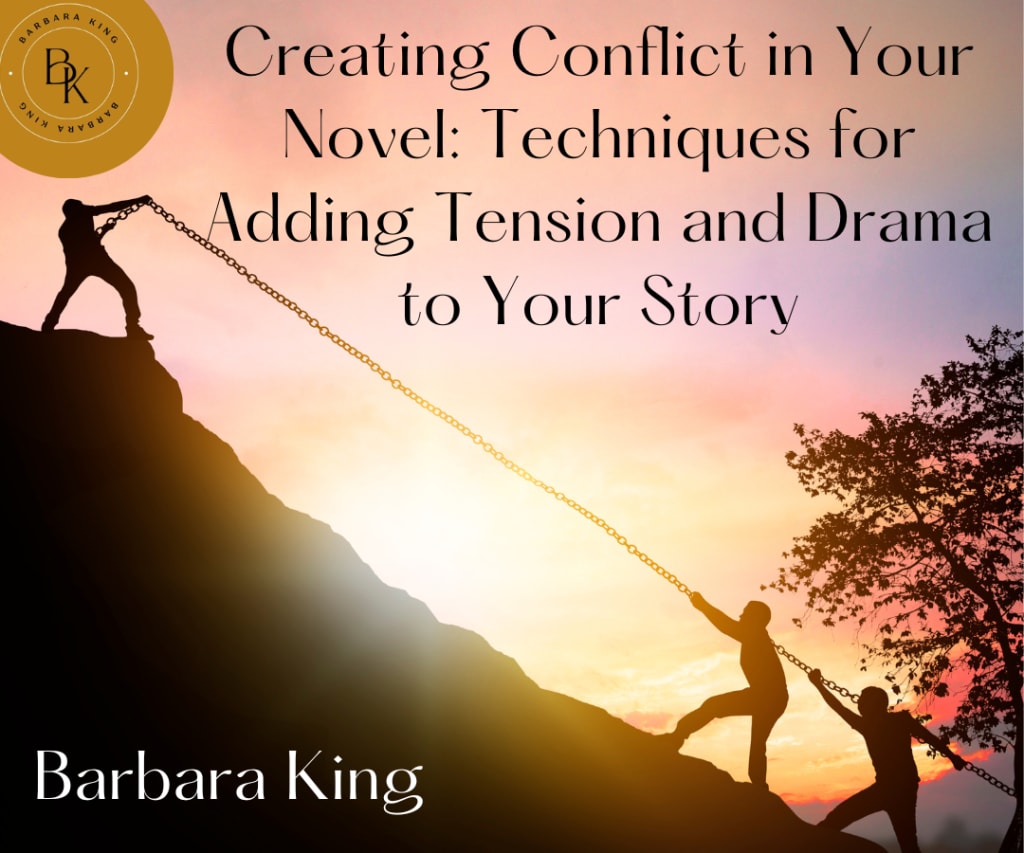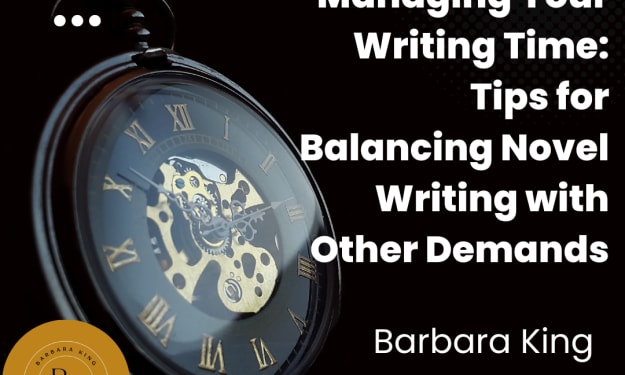Creating Conflict in Your Novel
Techniques for Adding Tension and Drama to Your Story

Every story needs conflict to keep readers engaged and invested in the outcome. Any I don't mean conflict as a big battle or some big space race. There's conflict in all stories - even Pride and Prejudice has conflict.. lots of it! Conflict is what drives the plot forward, creates tension and drama, and ultimately leads to a satisfying resolution. But how do you create conflict in your novel? Here are some techniques and tips to help you add tension and drama to your story:
Establish Goals and Obstacles
Every character in your story should have goals that they're trying to achieve. Your whole story is that your main character wants something and something is in their way stopping them from getting it. These goals can be big or small, but they should be important to the character. Once you've established the character's goals, create obstacles that stand in their way. These obstacles can be internal (such as fear or self-doubt) or external (such as a physical or social barrier). The more difficult the obstacles, the more conflict you'll create.
Use Antagonists
Antagonists are characters who stand in direct opposition to your protagonist. They can be villains, rivals, or simply someone who has a different goal or opinion than your protagonist. Antagonists create conflict by creating obstacles and challenges for your protagonist to overcome. They can also be a source of tension and drama in your story, especially if they're particularly cruel or cunning. All Batmans need a Joker and every high school needs a Regina George.
Create Stakes
Stakes are what your character stands to gain or lose by achieving their goals. If the stakes are high, the conflict will be more intense. For example, if your character is trying to save their family from a dangerous situation, the stakes are life and death. If your character is trying to win a small competition, the stakes are lower. Make sure the stakes are clear to the reader, so they understand what's at risk.
Use Dialogue
Just like a movie would be no good without the characters talking the same goes for your book. Dialogue can be a great way to create conflict in your story. When characters have different opinions, beliefs, or goals, they can argue and debate, creating tension and drama. Make sure each character has a unique voice and perspective, so their dialogue feels authentic and engaging.
Create Time Constraints
Time constraints can add a sense of urgency to your story and create conflict. If your character only has a limited amount of time to achieve their goal, they'll be under pressure to act quickly and make tough decisions. Time constraints can also create tension between characters who have different priorities and goals. There's no greater motivator than a ticking clock, especially when the hands start speeding up as the story goes along. Your characters had a month to raise the money to save the animal shelter? Well, now they only have a week.
Use Flashbacks and Backstory
Flashbacks and backstories can be used to create conflict by revealing information about your characters' pasts. By showing what your characters have gone through, you can create emotional conflicts that drive the plot forward. You can also use backstory to create tension between characters who have a history together. Just be careful not to info dump your backstory onto your reader and be mindful when using flashbacks, they're easy to overuse and can pull your reader out of the story if done haphazardly.
Use Plot Twists
Plot twists can be a great way to create conflict and tension in your story. I mean did you watch the last Twilight movie? I was in the theater that day and not one single person saw that coming.. who hasn't read the books - even if you don't like Twilight you have to give that plot twist some credit. By taking the story in unexpected directions, you can keep readers engaged and invested in the outcome. Make sure the plot twists are believable and don't feel like a cheap trick to create conflict.
In conclusion, conflict is essential for creating a compelling story. By using these techniques and tips, you can add tension and drama to your story, keeping readers engaged from beginning to end. Remember to establish goals and obstacles, use antagonists, create stakes, use dialogue, create time constraints, use flashbacks and backstories, and use plot twists to create conflict and tension in your novel.
Best of luck and keep writing!
With love,
B.K. xo
*If you've liked what you read you can show your support by subscribing, pledging your support, or leaving me a tip that directly supports and aids me as a writer.
By joining Vocal+ you can earn more per read on every story you publish on Vocal.
Click my link to start your 7-day free trial today and start earning more for your stories.
_____________________________________________
This story was originally posted on Medium.
If you would like to experience Medium yourself, consider supporting me and thousands of other writers by signing up for a membership. It only costs $5 per month, it supports us writers, greatly, and you have the chance to make money with your own writing as well. By signing up with this link, you'll support me directly with a portion of your fee, it won't cost you more. If you do so, thank you a million times!
If you love what you've read you can also show your support by buying me a cup of coffee to fuel my writing.
https://www.buymeacoffee.com/barbaraking
*Contains Affiliate Links
About the Creator
Elise L. Blake
Elise is a full-time writing coach and novelist. Blake is a recent college graduate from Southern New Hampshire University where she earned her BA in Creative Writing.






Comments
There are no comments for this story
Be the first to respond and start the conversation.